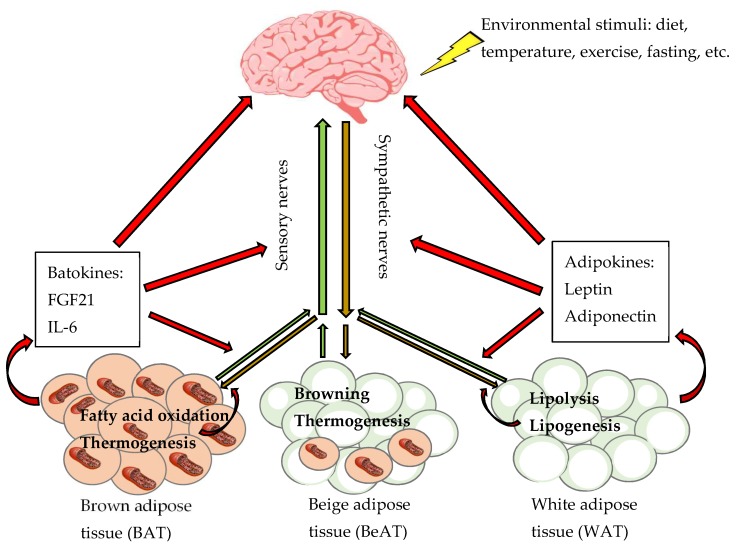Figure 1.
Neuroendocrine regulation of lipid metabolism at different types of adipose tissues. A two-way communication exists between the brain and white, brown and beige adipose tissues (WAT, BAT and BeAT, respectively) involving neural signals consisting of afferent sensory nerves (green arrows) and efferent sympathetic nerves (brown arrows), and endocrine signals (red arrows) consisting of WAT adipokines and BAT batokines. Environmental stimuli (i.e., diet, temperature, exercise, fasting) that change energy stores modulate sympathetic activity to regulate lipolysis, lipogenesis, and adipokine secretion at WAT; thermogenesis, fatty acid oxidation, and batokine secretion at BAT; and induction of BeAT and browning. A number of WAT adipokines (such as leptin and adiponectin) and BAT batokines (such as fibroblast growth factor 21 [FGF21] and interleukin 6 [IL-6]) interact with neural circuits to cooperatively regulate whole-body energy metabolism.

